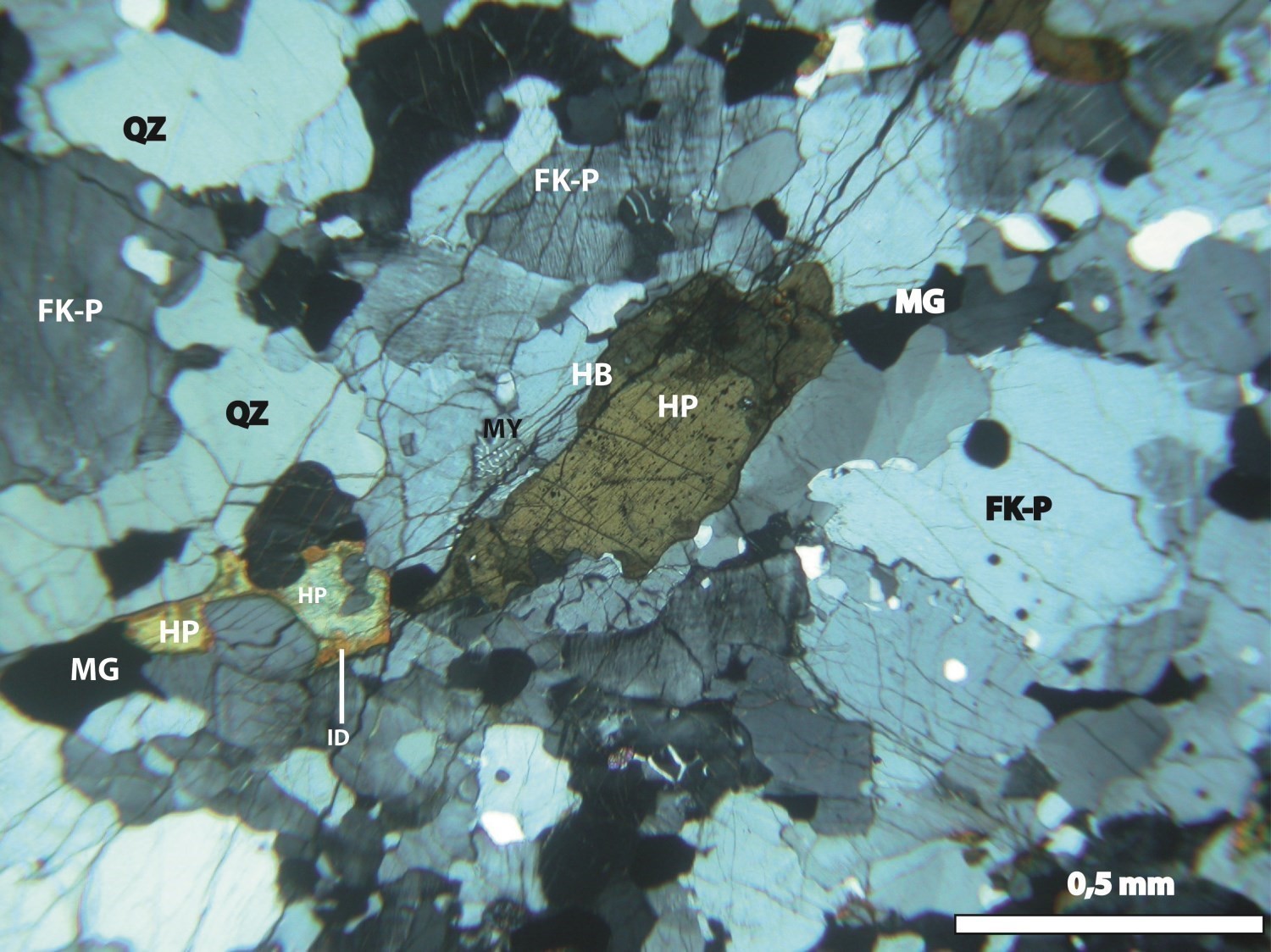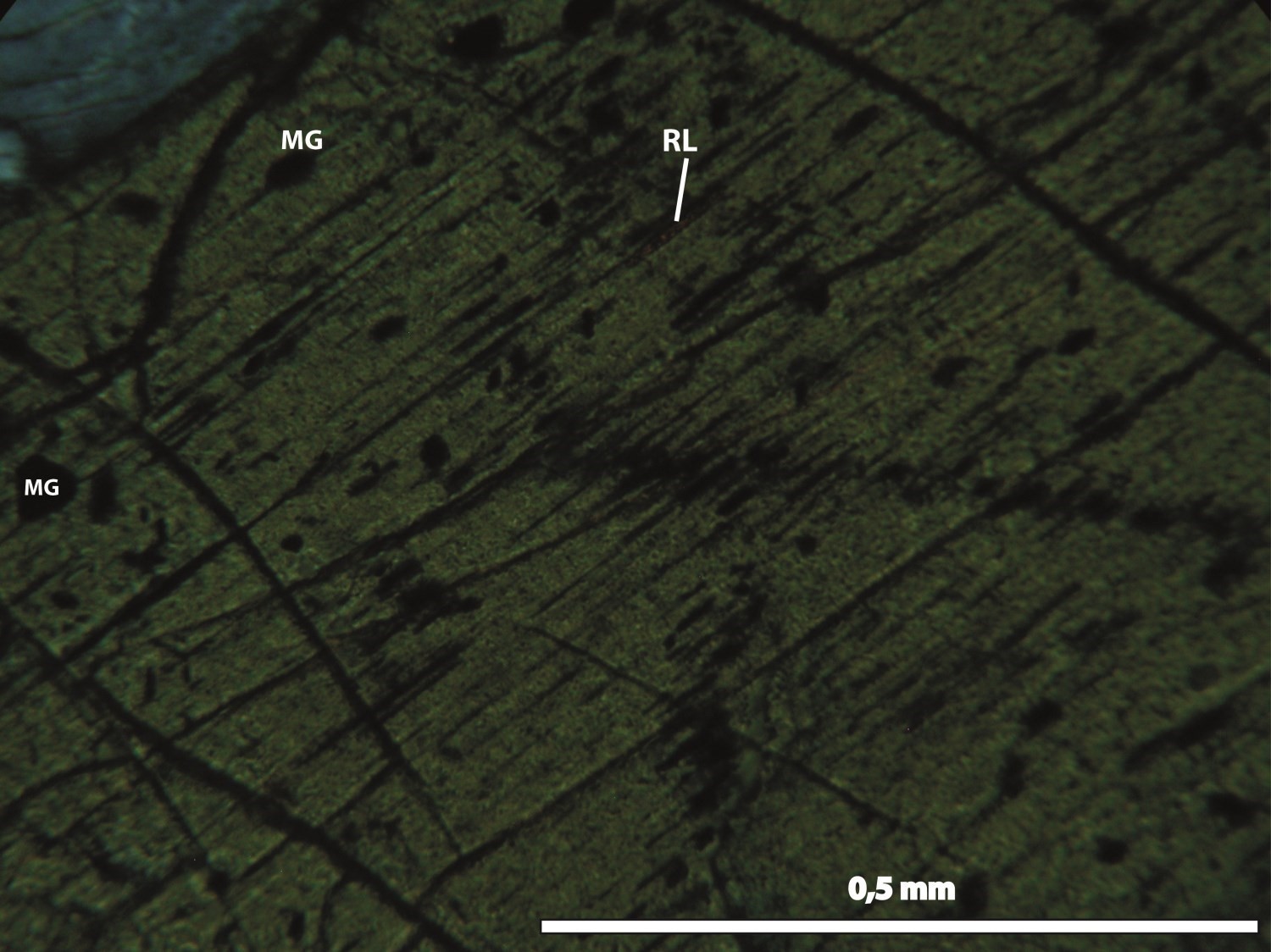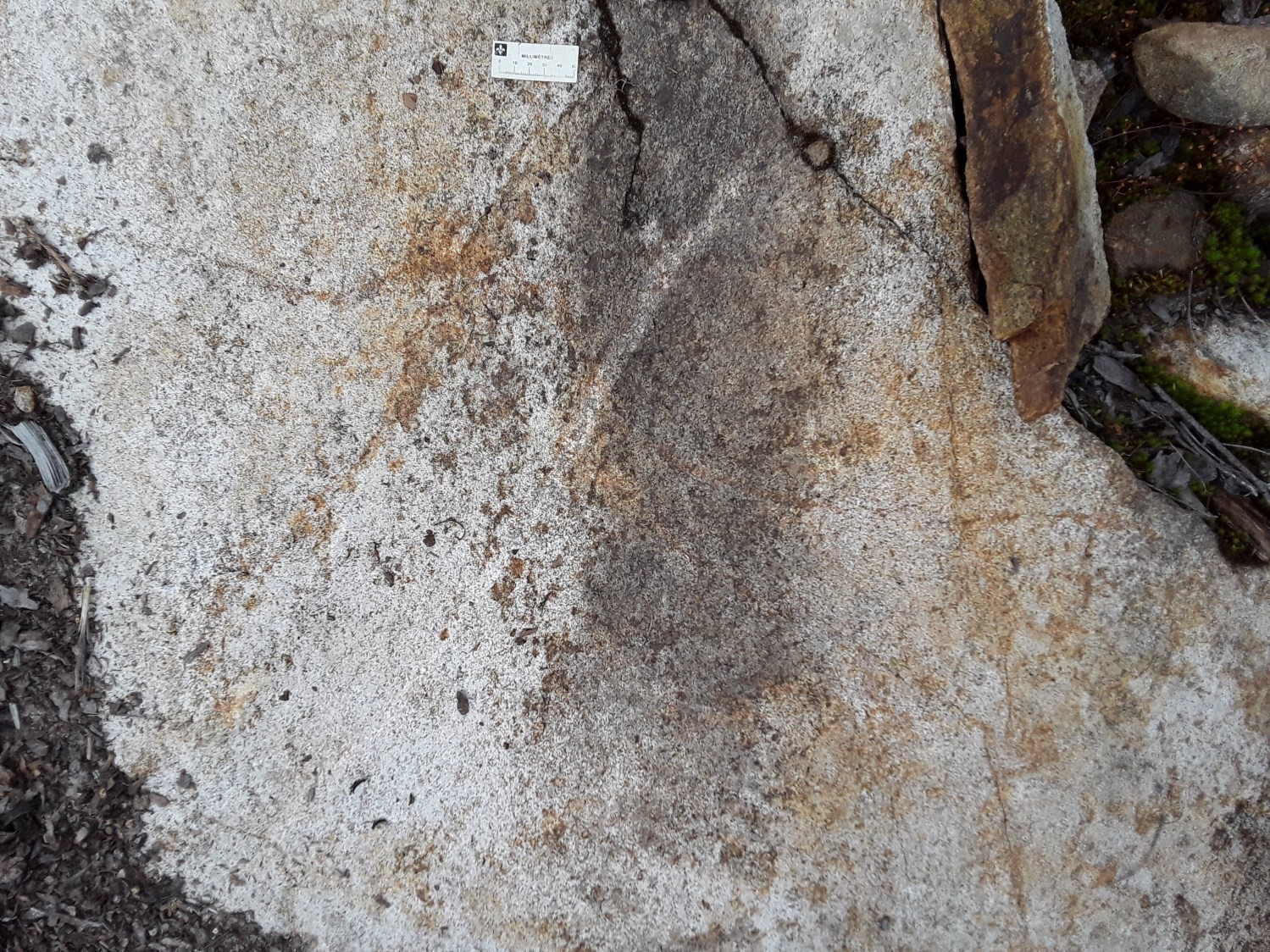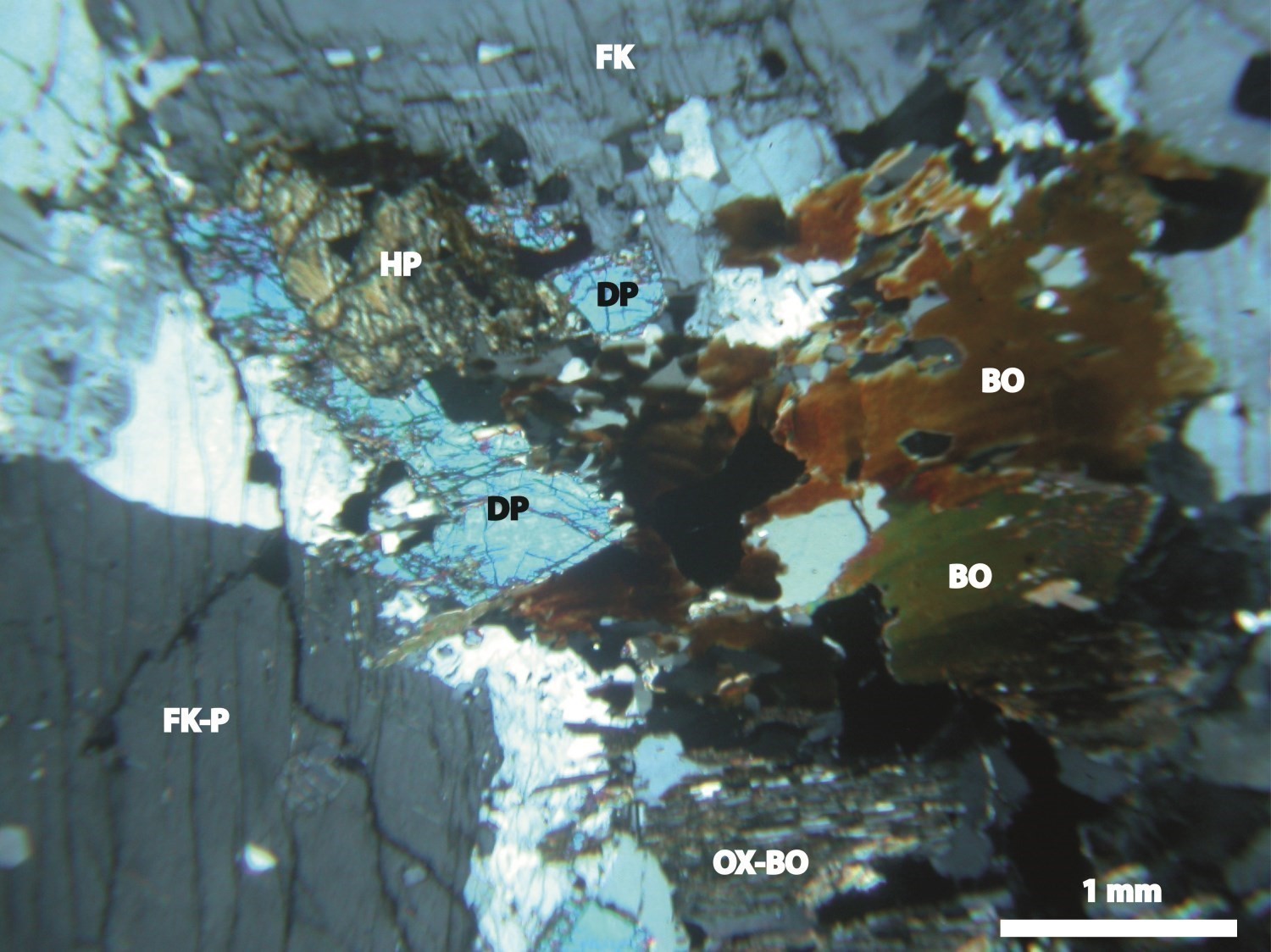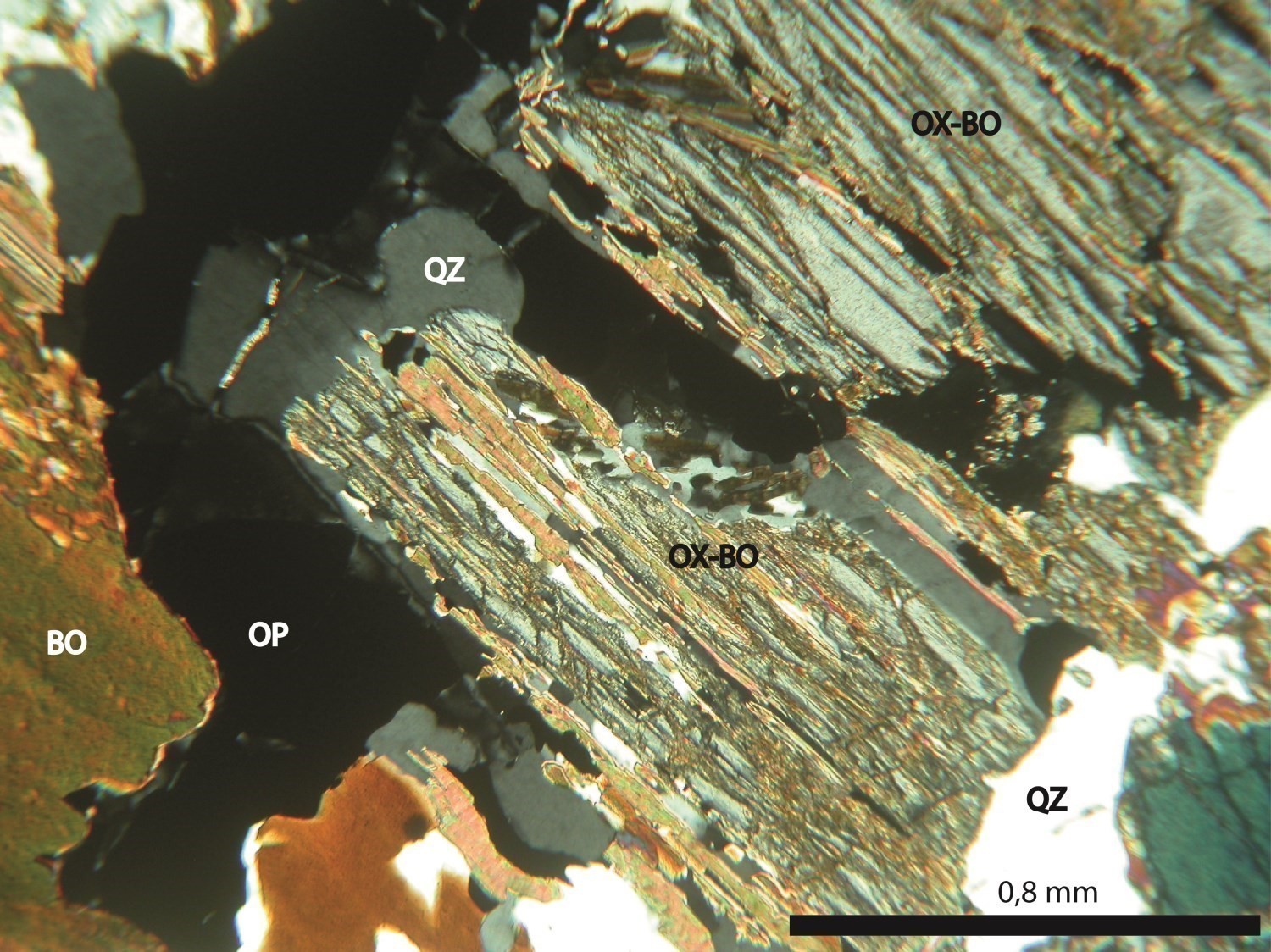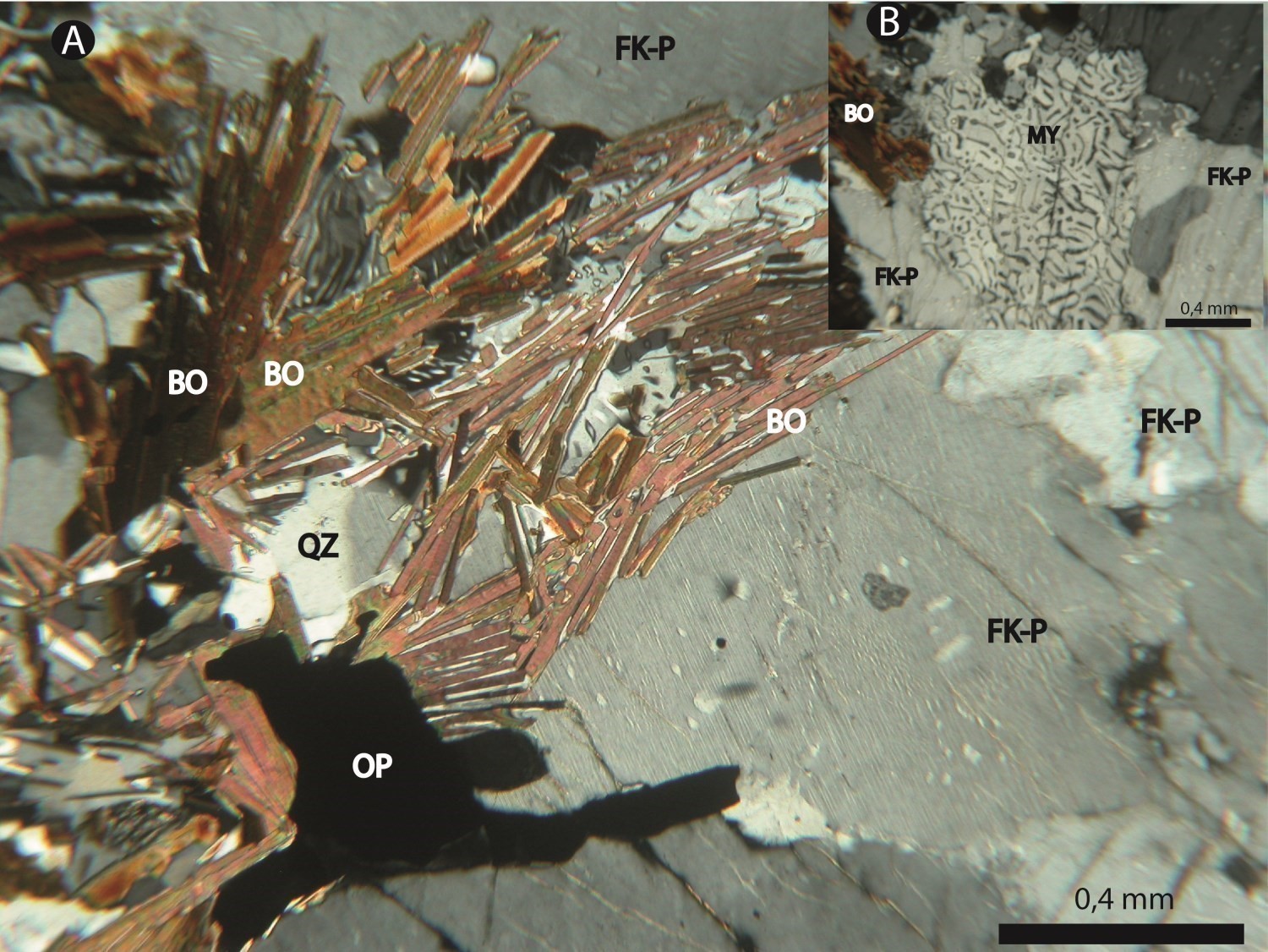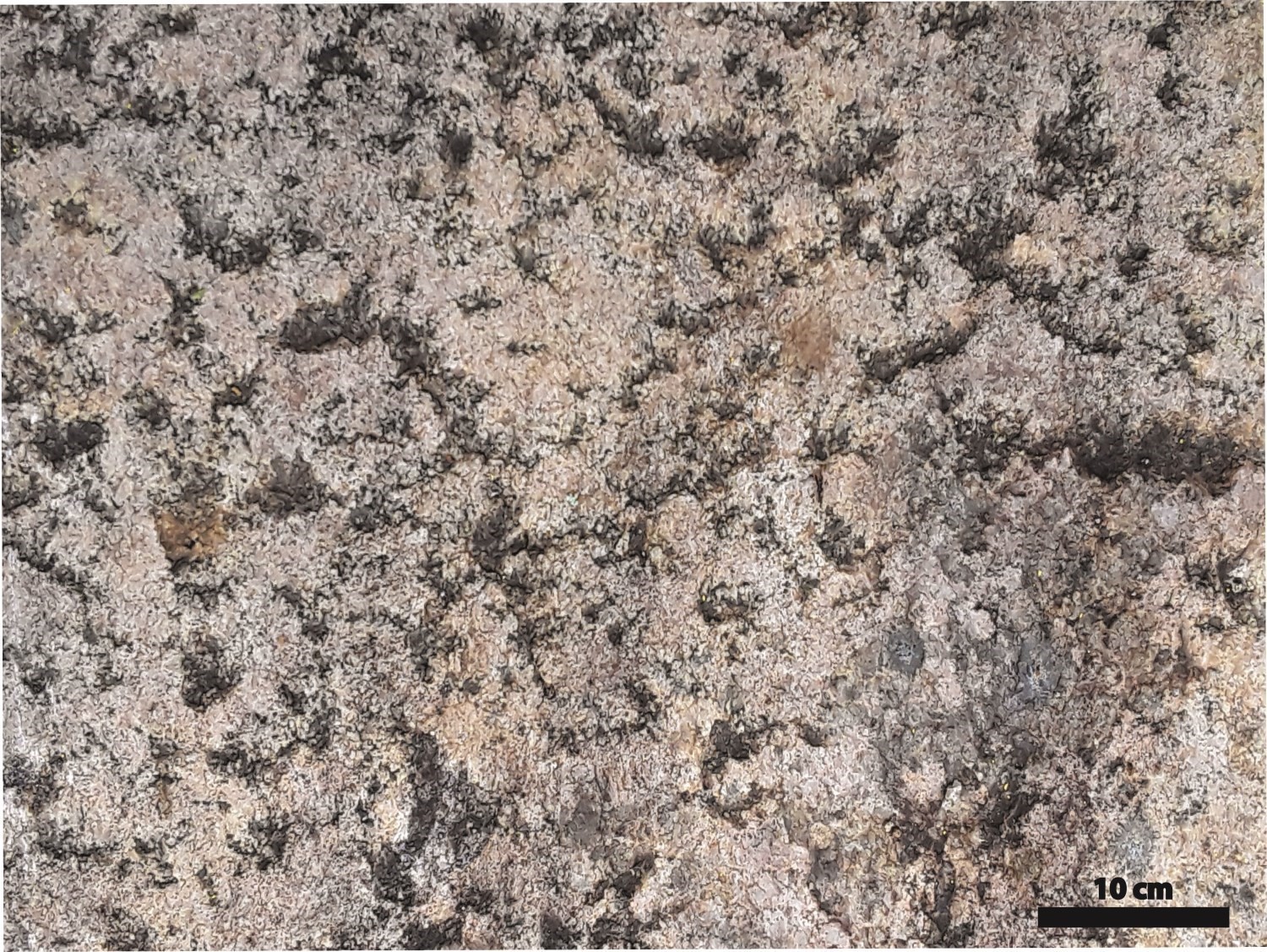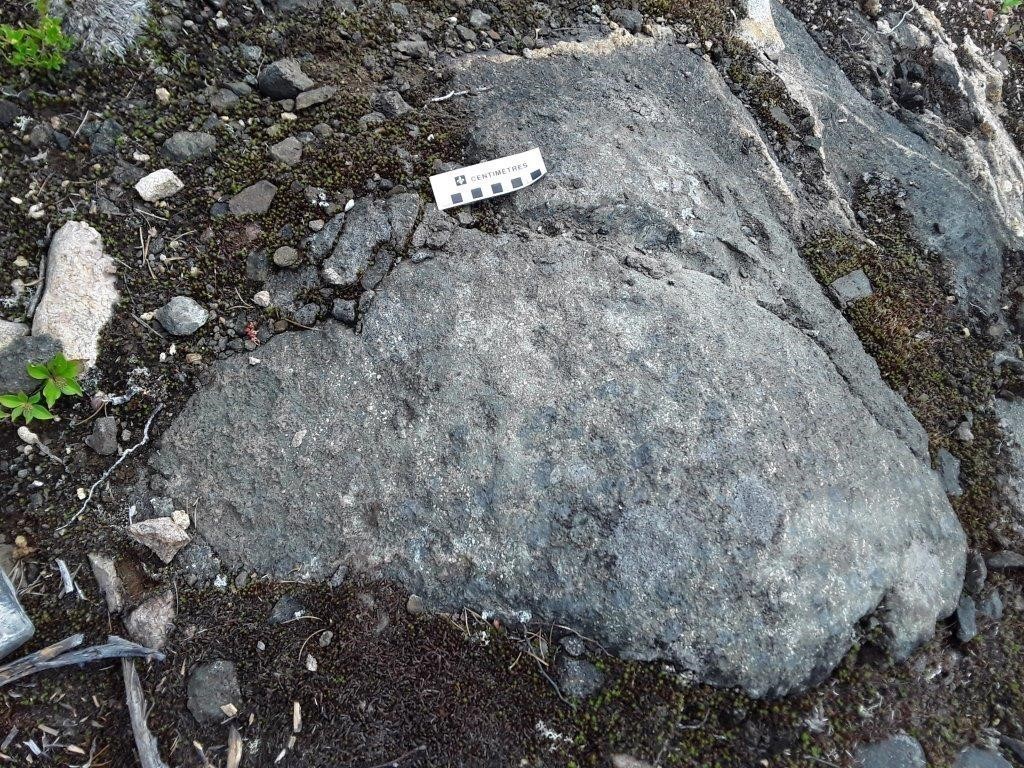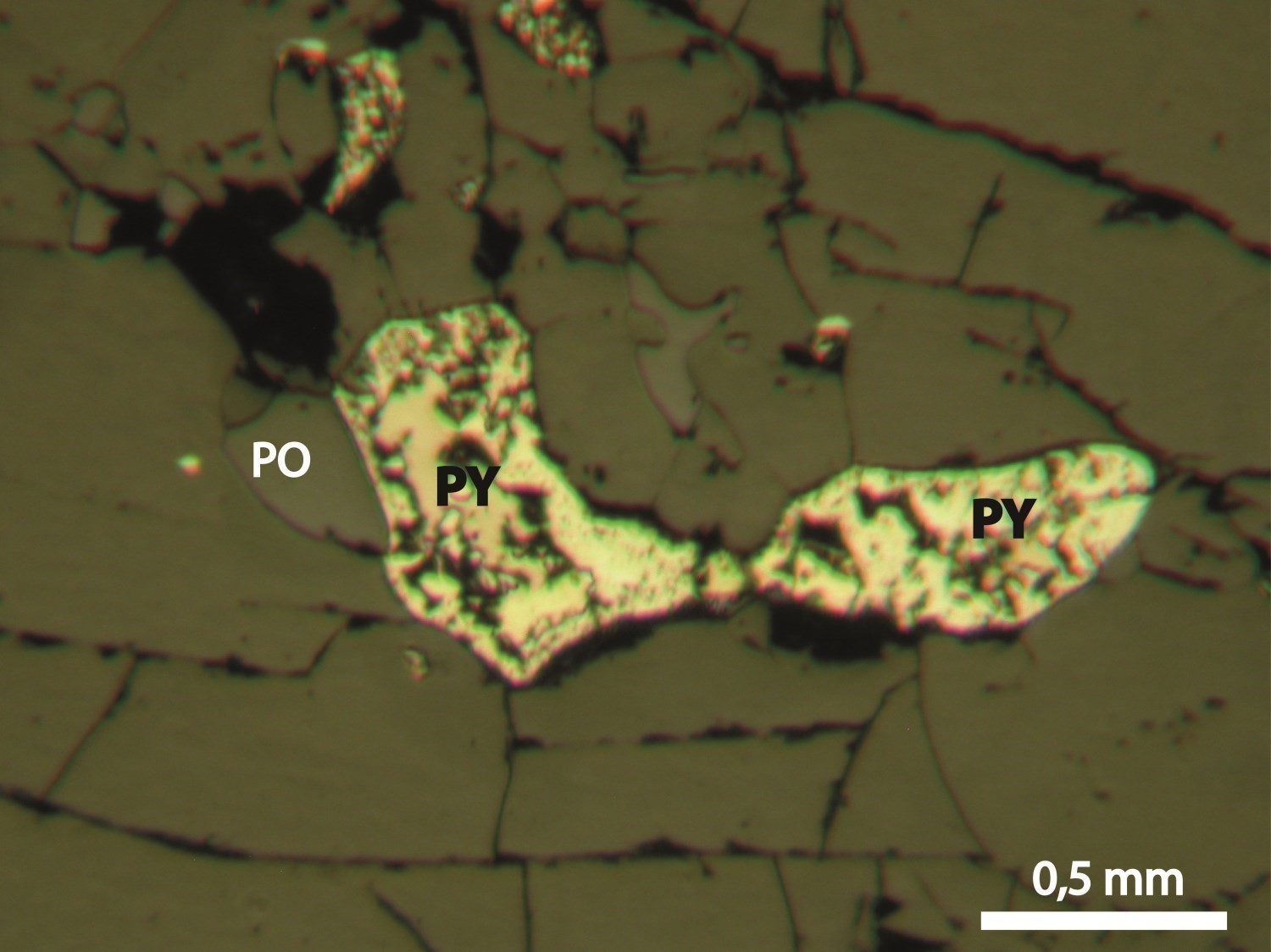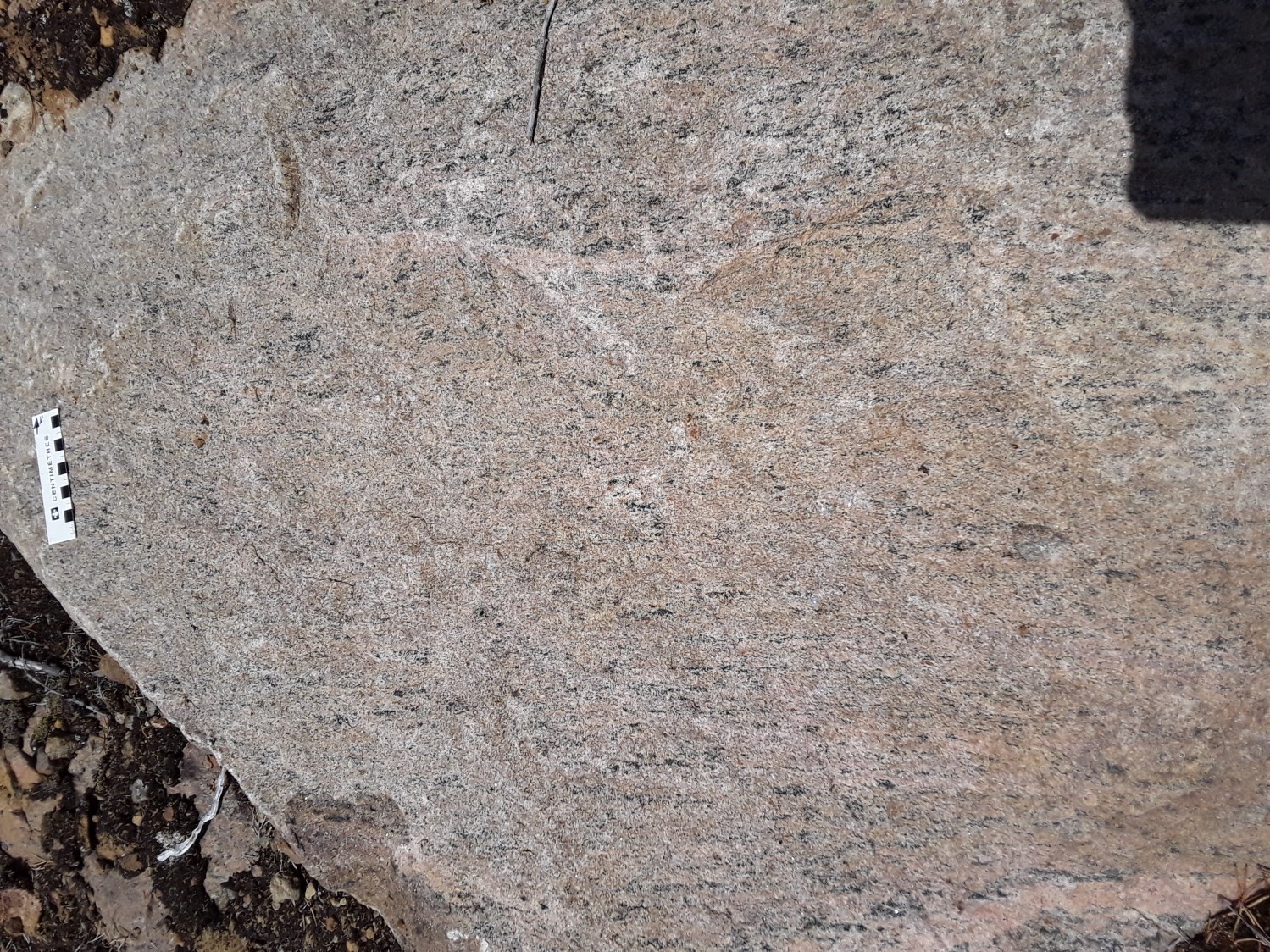
DISCLAIMER: This English version is translated from the original French. In case of any discrepancy, the French version shall prevail.
| Author(s): | Moukhsil and El Bourki, 2021 |
| Age: | Mesoproterozoic |
| Stratotype: | Reference outcrops located SW of Brûlé Lake (e.g. 2020-AM-047 and 2020-AM-052) |
| Type area: | South of Brûlé Lake (western part of NTS sheet 32H02) |
| Geological province: | Grenville Province |
| Geological subdivision: | Allochton |
| Lithology: | Felsic, intermediate and ultramafic intrusive rocks |
| Category: | Lithodemic |
| Rank: | Suite |
| Status: | Formal |
| Use: | Active |
None
Background
The Bolduc Intrusive Suite was defined during mapping of sheet 32H02 by Moukhsil and El Bourki (2021), NNW of Lake Saint-Jean. It consists of several phases divided into two intrusions well-defined from the aeromagnetic survey (Intissar and Benahmed, 2015).
Description
The Bolduc Intrusive Suite is polyphase and consists of hypersthene granite (charnockite), syenogranite, alkali feldspar granite, quartz syenite, mangerite, a minor amount of olivine websterite, in addition to containing enclaves of Barrois Complex paragneiss (mPboi4). Olivine websterite hosts a Ni-Cu prospective zone (Jumeau Nord).
Charnockite (hypersthene granite) is generally grey-brown in altered patina and greyish in fresh exposure. It is medium to coarse grained and has a magmatic to sub-magmatic texture. In the field, a granoblastic texture can be observed locally. In thin sections, it is composed of quartz forming large zones with the beginning of subgrains, perthitic K-feldspar, plagioclase displaying concentric polysynthetic twinning, locally myrmekitic, biotite, magnetite and hypersthene. The latter contains rutile and magnetite inclusions and is altered (uralitization) at its edge (hornblende and iddingsite). Apatite, titanite and zircon are the accessory phases of charnockite.
Granite is grey-white to locally brownish in altered patina and grey-green in fresh exposure. There is a transition from fine to coarse grain size, and foliation. The rock is composed of large quartz zones, K-feldspar, plagioclase, biotite, magnetite, titanite and lesser amounts of orthopyroxene, clinopyroxene, hornblende and accessory minerals (zircon, epidote, apatite). Some outcrops contain variable contents of quartz (18-45%), K-feldspar (25-35%) and plagioclase (30-35%).
Alkali feldspar granite (e.g. outcrop 2020-ME-1000) is medium grained, pink in fresh surface, pink-brown in altered patina and affected by moderate to intense deformation (foliation). More deformed rocks are fine grained. This phase contains K-feldspar, quartz, sericitized plagioclase and variable contents of biotite. K-feldspar (microcline) in this case is mainly perthitic. Epidote, apatite and zircon are present as accessory minerals, accompanied by opaque minerals (magnetite, pyrite).
Mangerite (hypersthene monzonite, hypersthene quartz monzonite) is generally rusty brown to locally whitish in altered surface and greenish in fresh exposure (outcrop 2020-AM-052). It is mainly coarse grained and composed of quartz, perthitic or non-perthitic K-feldspar, generally sericitized plagioclase and locally myrmekitic plagioclase, hypersthene, large biotite crystals and opaque minerals (including magnetite). Hypersthene is altered to biotite and quartz. Biotite lamellae are present in cleavage planes of hypersthene. Biotite also occurs as lamellae (symplectic texture) intergrown among the other minerals of charnockite.
Quartz syenite is greyish to pinkish in altered patina and pinkish in fresh exposure (outcrop 2020-AM-047). It is coarse grained and slightly deformed in places. In thin sections, the rock is granular. Quartz is present in large zones without subgrains or undulating extinction (magmatic texture). Plagioclase (Ab57 – An12 according to CIPW standard in Janoušek et al., 2006) displays subparallel polysynthetic twinning and K-feldspar is generally perthitic. Orthopyroxene, hornblende and biotite are also present locally. Syenite also contains accessory mineral phases such as epidote of magmatic origin, opaque minerals (magnetite), apatite and zircon.
Olivine webstersite is less present in the area mapped and is only visible in one outcrop (2020-AM-055). This medium-grained rock is greenish to black in fresh exposure and greenish in altered patina. It is intruded by charnockite of the same unit, and locally banded. Bands have a gabbronoritic composition and websterite takes the form of a metric boudin. In addition to olivine, websterite contains pyroxenes (orthopyroxene and clinopyroxene) associated with ~2% disseminated millimetric pyrite and pyrrhotite grains, as well as traces of pentlandite and chalcopyrite.
Thickness and distribution
The Bolduc Intrusive Suite consists of two intrusions. The first is more or less elliptical. It occupies an area of ~70 km2 and is N-S oriented. The northern part of this intrusion is located near Dorés Lake. The second intrusion is oriented NNW-SSE and is of lesser importance. It covers an area of ~9 km2 and is located ~400 m south of Chevreuil Lake (NW corner of sheet 32H02).
Dating
None.
Stratigraphic Relationship(s)
The Bolduc Intrusive Suite is in fault contact with the Jean-Marie Intrusive Suite and metric to decametric enclaves of the Barrois Complex are mapped within it.
Paleontology
Does not apply.
References
Publications Available Through SIGÉOM Examine
INTISSAR, R., BENAHMED, S. 2015. Levé magnétique aéroporté dans le secteur ouest du Lac-St-Jean, Province de Grenville. MERN, GOLDAK AIRBORNE SURVEYS. DP 2015-06, 7 pages and 2 plans.
MOUKHSIL, A., EL BOURKI, M. 2021. Géologie de la région de Girardville, Province de Grenville, région du Saguenay – Lac-Saint-Jean, Québec, Canada. MERN. BG 2021-02, 1 plan.
Other Publications
JANOUŠEK, V., FARROW, C.M., ERBAN, V., 2006. Interpretation of whole-rock geochemical data in igneous geochemistry: introducing Geochemical Data Toolkit (GCDkit). Journal of Petrology; volume 47, pages 1255-1259. doi.org/10.1093/petrology/egl013
Suggested Citation
Ministère de l’Énergie et des Ressources naturelles (MERN). Bolduc Intrusive Suite. Quebec Stratigraphic Lexicon. https://gq.mines.gouv.qc.ca/lexique-stratigraphique/province-de-grenville/suite-intrusive-de-bolduc_en [accessed on Day Month Year].
Contributors
|
First publication |
Abdelali Moukhsil, P. Geo., Ph.D. abdelali.moukhsil@mern.gouv.qc.ca; Mhamed El Bourki, GIT., M.Sc. mhamed.elbourki@mern.gouv.qc.ca (redaction) Mehdi A. Guemache, P. Geo., Ph.D. (coordination); Fabien Solgadi, P. Geo., Ph.D. (critical review); Simon Auclair, P. Geo., M.Sc. (editing); Céline Dupuis, P. Geo., Ph.D. (English version); André Tremblay (HTML editing). |



